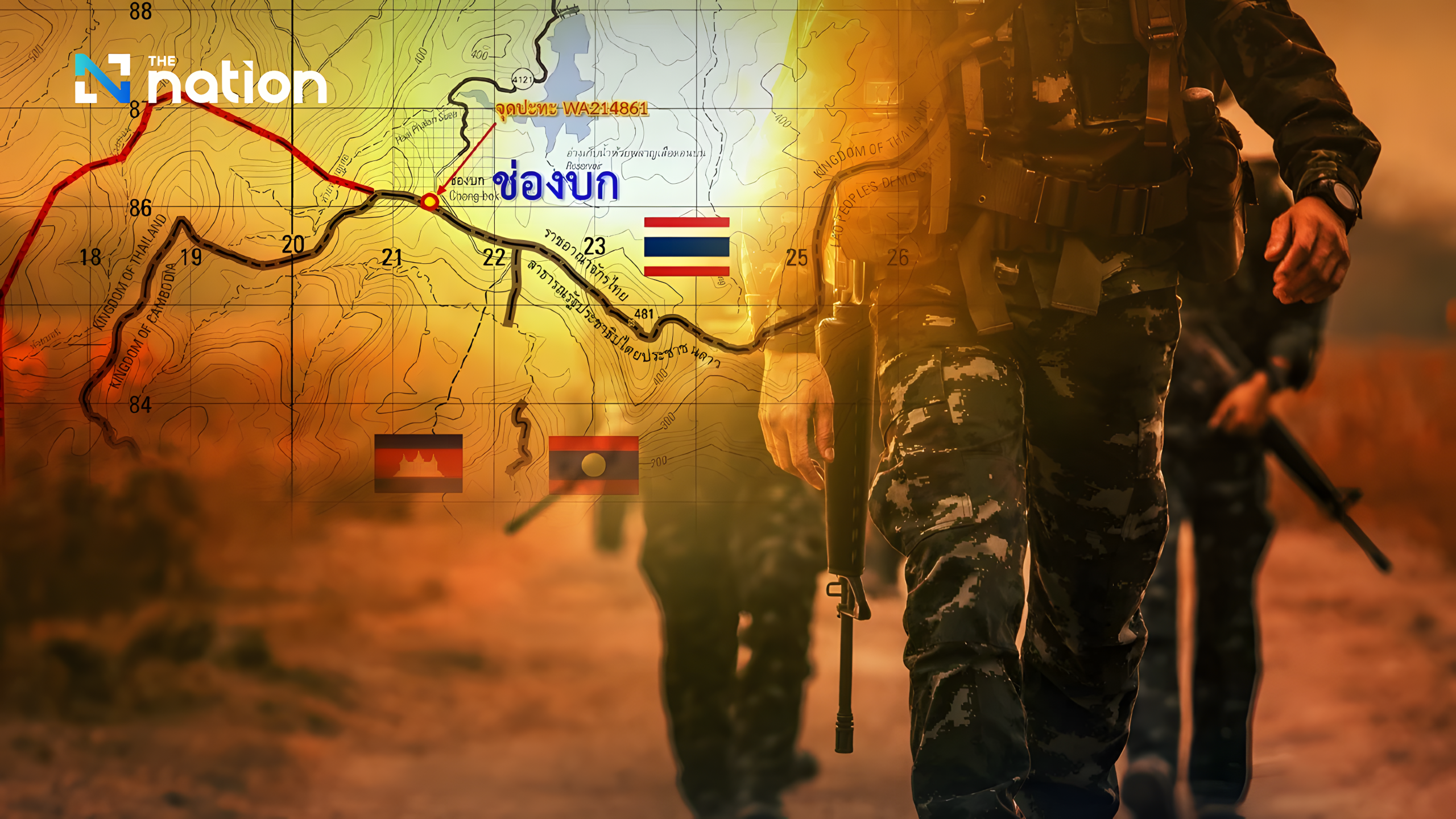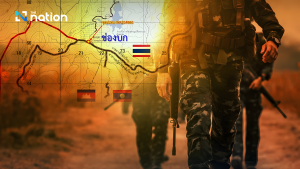Following a 1-hour-20-minute meeting on May 29 between Ge Pana Klaewblaudtuk, Commander-in-Chief of the Royal Thai Army, and Gen Mao Sophan, Commander of the Royal Cambodian Army, both sides reached four points of agreement.
However, the statements released by the Thai and Cambodian militaries shortly afterwards differed in key areas. One point of agreement was that both sides will await the Thai-Cambodian Joint Boundary Committee (JBC), which is expected to convene within two weeks, and have agreed to exercise mutual restraint in the meantime.
The main point of contention lies in the Cambodian side’s statement, which noted that its forces would not withdraw or disarm from the area of the clash, claiming longstanding control of the disputed site prior to the 2000 Memorandum of Understanding (MoU) on land boundary demarcation between Thailand and Cambodia.
In response, Royal Thai Army spokesperson Maj Gen Winthai Suvaree quickly issued a statement urging the Thai public to remain calm. He clarified that the Cambodian statement did not specify the exact location in question. However, he confirmed that as of the early morning of May 28—the time of the latest confrontation at the trench area—both sides had withdrawn from direct contact, effectively easing the standoff.
The atmosphere between Thai and Cambodian troops stationed at a distance near the recent clash site remains tense. This unease stems from the Cambodian side suffering two fatalities and several injuries, while the Thai side reported no casualties.
The strain was evident during the high-level military meeting between the Royal Thai Army and the Royal Cambodian Army. Reports suggest that both delegations expressed frustration, with Cambodian Army Commander Gen Mao making pointed remarks toward his Thai counterpart Gen Pana , reportedly in anger over the loss of Cambodian personnel, despite Thailand’s formal expression of condolences.
One notable absence during the meeting on May 28 was Maj Gen Tol Sophorn, Deputy Commander of Cambodia’s 3rd Support Division, who previously called his Thai counterpart to propose a ceasefire. He did not attend the military dialogue.
With the bilateral Joint Boundary Committee (JBC) meeting scheduled in two weeks’ time, to be co-chaired by Thai Foreign Minister Maris Sangiampongsa and Cambodian Deputy PM and Foreign Minister Prak Sokhonn, tensions remain high.
On June 1, the Thai JBC team, led by Foreign Minister Maris, convened a preparatory meeting to outline negotiation strategies. Thailand reaffirmed that border disputes must be addressed through a three-tiered mechanism, emphasizing diplomacy and existing bilateral frameworks.
Joint Boundary Committee (JBC) – A bilateral body between Thailand and Cambodia expected to convene in mid-June, hosted by Cambodia. The Cambodian side will determine the date, time, and location of the meeting.
General Border Committee (GBC) – The GBC held its most recent meeting on May 1, serving as a platform for broader security and military cooperation between the two countries.
Regional Border Committee (RBC) – Comprising military representatives from local border commands, this mechanism provides direct communication at the field level.
At the most recent JBC preparatory meeting chaired by Maris on June 1, the Thai side outlined its negotiation framework for the upcoming mid-June dialogue. One key proposal is the implementation of temporary de-escalation measures, aimed at reducing tensions while boundary surveys and demarcation efforts are ongoing.
“Both sides agree to reduce tensions through existing mechanisms. This reflects the shared commitment between the Prime Ministers of both countries to resolve the issue peacefully,” said Foreign Minister Maris.
“We have the political will to solve this issue without conflict, through the established three-tier mechanism—JBC, GBC, and RBC. Relevant agencies have been invited to prepare for discussions with Cambodia under the JBC framework, which will convene as soon as possible.”
In the meantime, Thai and Cambodian troops stationed near the disputed area have been instructed to maintain a ceasefire, preserve the current state of the area, and avoid further escalation—following high-level diplomatic coordination involving the Prime Ministers, Deputy Prime Ministers, Ministers of Defense and Foreign Affairs, as well as both Army Commanders.
The root cause of the flare-up at Chong Bok stems from unresolved border demarcation, with each side relying on its own maps. While there is mutual agreement that a JBC-led process is the appropriate path toward resolution, observers note that a quick settlement remains unlikely due to ongoing disagreements on historical interpretations and territorial claims.
Lt Gen Boonsin Padklang, Commander of Thailand’s Second Army Region, has been actively inspecting Ta Muen Temple and military outposts along the Thai-Cambodian border to boost morale and ensure troops remain alert and ready for any escalation.
On the Cambodian side, military commanders have similarly visited border positions to rally their forces. This comes alongside increasingly hardline rhetoric from Hun Sen, President of Cambodia’s Senate, and social media campaigns calling for a boycott of Thai goods—further stoking nationalist sentiment.
In response, Thailand’s national security agencies convened an urgent meeting on May 31 to formulate measures for securing the border. The move followed reports that Cambodia had deployed additional troops and heavy weaponry to the Chong Bok area in Ubon Ratchathani Province. Thai authorities have since prepared to close all official and temporary border crossings, including six permanent checkpoints, ten local trade points, and tourist areas such as Ta Muen Thom and Preah Vihear, if deemed necessary.
While the upcoming Joint Boundary Committee (JBC) meeting between Thailand and Cambodia provides a diplomatic platform for addressing longstanding border disputes, the process of demarcation is complex and time-consuming.
At present, the Chong Bok area is heavily fortified, with both Thai and Cambodian forces fully deployed and equipped with combat-ready units and heavy arms. The situation has become so tense that observers say all that remains is the whistle to trigger a confrontation.
1.




